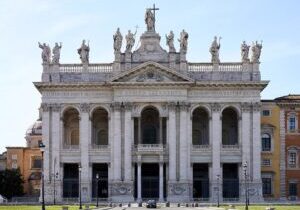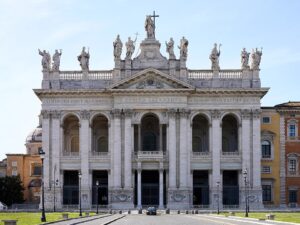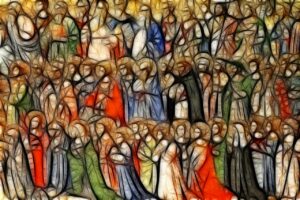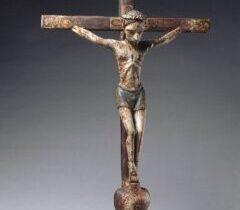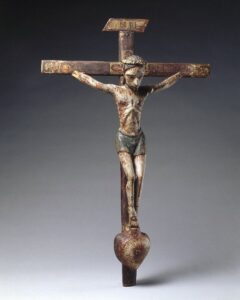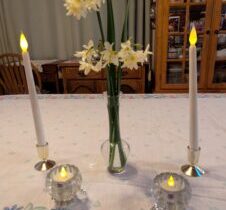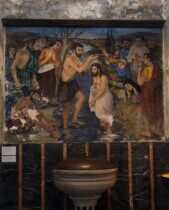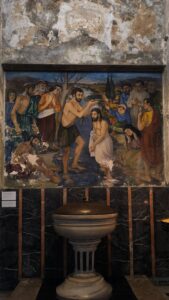Shepherd of a People – A True King’s Role
![]() What kinds of qualities do we expect in a King? Historically, kings have been warriors. They have protected the lands they own by use of their armies and in the process the people who live on those lands were also protected. Kings have gone to war and conquered new lands. They have made and enforced the rules, including how much is to be paid in taxes by the people of the land. They make treaties with other rulers. Their children, especially their sons, are expected to follow them as rulers or warriors. Marriages between the children of the kings of different lands serve as the bonds that establish and maintain peace among them. Any who challenge the power of the king will soon find themselves punished, imprisoned, or executed. The king’s power is absolute.
What kinds of qualities do we expect in a King? Historically, kings have been warriors. They have protected the lands they own by use of their armies and in the process the people who live on those lands were also protected. Kings have gone to war and conquered new lands. They have made and enforced the rules, including how much is to be paid in taxes by the people of the land. They make treaties with other rulers. Their children, especially their sons, are expected to follow them as rulers or warriors. Marriages between the children of the kings of different lands serve as the bonds that establish and maintain peace among them. Any who challenge the power of the king will soon find themselves punished, imprisoned, or executed. The king’s power is absolute.
Most modern monarchs are more limited in their ability to command obedience. Many monarchies are parliamentary, giving elected officials a role in making decisions for the country/kingdom. However, these reductions of the power of the ruler were not easily won and are strictly guarded by the people of such nations.
In the early years of Israel’s monarchy, the transition from one king to the next was not predetermined. The King’s son did not automatically inherit the throne. In fact, the Lord had chosen the new king for Israel before the ruler, King Saul, was anywhere near the end of his rule. Saul had not followed the Lord’s instructions and had fallen out of favor as a result. The prophet Samuel, following the Lord’s directions, selected David, the youngest son of a shepherd family in Bethlehem, to be the next king. Samuel anointed David, but the rest of the people had no idea this had occurred.
When Saul died, it took a while for the different factions among the twelve tribes to figure out who should be king of all. Eventually, they decided on David, the shepherd who had killed Goliath and played important roles in many conflicts with enemies of Israel.
Three reasons were given for this choice. First, they were related – all were descendants of Abraham, Isaac, and Jacob. Secondly, David had played important military and leadership roles under King Saul. Thirdly, and most importantly, the Lord had called him: “You shall shepherd my people Israel and shall be commander of Israel.”
David agreed to accept the role and was anointed formally and publicly to serve as King of Israel.
It’s important to note here, that his role was not envisioned initially as being a warrior. He was to continue to be a shepherd. From among the descendants of this shepherd, the Messiah would be born. (2 Sam 5:1-3)
Being human, David was not perfect. He made plenty of mistakes in his years as ruler and suffered the tragic results of many of them. But the original vision of the Lord was not changed. David was to be a shepherd. This was the role the Lord gave as the model for the vocation of king.
On this last Sunday of the liturgical year, we recognize and celebrate Our Lord Jesus Christ, King of the Universe. It’s a big title and a big deal. King of the Universe! That’s a lot more than king of any nation on earth, even a great empire such as Rome! How could a simple carpenter turn out to be King of the Universe?
God’s ways are not always our ways. Just as the Lord chose a shepherd boy to become king of Israel, He became one of us, entered into our human lives and history, as Jesus, the son of a carpenter in a small conquered nation, part of a huge empire. Over the course of three years, Jesus moved from sharing the insights he received at his baptism in the Jordan about the coming of the Kingdom of God with simple fishermen and shepherds to healing the sick, feeding the hungry, preaching and teaching the crowds who hungered for God’s intervention in their lives and the coming of the kingdom.
Many of those who followed expected Jesus to lead a revolution against the Romans. Many were not prepared to hear him speak of forgiveness and mercy. But enough did listen and follow him that the authorities became worried. What would Rome do to them all if this man led a revolution? It would not be a quiet, peaceful, solution.
As Jesus hung dying on the cross, a convicted criminal, four different images emerged of his possible role as king. First was the taunting of the rulers of the people who challenged him to prove himself God’s chosen one by coming off the cross by his own power. Second came the soldiers, taunting him. “If you are King of the Jews, save yourself.” Again, it was a question of earthly power. The third image came from one of the men crucified with him. “Are you not the Christ? Save yourself and us.” Again, show and claim earthly power as proof of kingship.
The fourth image was accurate. The other man who had been crucified, Dismas, spoke up, chiding the first who had demanded Jesus save them all. He proclaimed, “this man has done nothing criminal.” Then he spoke words recognizing the position and power, the true kingship of Jesus. “Jesus, remember me when you come into your kingdom.” To this man, Jesus gave a response. “Amen, I say to you, today you will be with me in Paradise.” (Lk 23:35-43)
A king is not saved by his army. A king is not saved by his horse. A king doesn’t work miracles or pull strings to save himself. A true king, an eternal king, is the one who leads with love and forgiveness, bringing others along with him. Like a shepherd caring for his sheep.
In the process, the power of darkness was overcome. Humanity received the inheritance for which we were all created – to join the holy ones in light, forgiven for our wrong choices and failures to love. The Son of the Most High has given himself to lead us into forgiveness and new life.
The beautiful hymn included in the letter to the Colossians reminds us. “He is the image of the invisible God, the firstborn of all creation… before all things, and in him all things hold together… head of the body, the church… the beginning… firstborn of the dead… in him all the fullness was pleased to dwell and through him to reconcile all things for him…” (Col 1:12-20)
It’s a great celebration of the wonders of the gift of Jesus to all of us. A shepherd king for us all. A carpenter who listened to the Spirit’s voice, then shared that good news with us, his sisters and brothers.
As we celebrate today, may we remember who our King is. The shepherd who leads a people dedicated to care for each other, for our earth, for the universe. We feed the hungry, clothe those who need the basics, including winter coats, shoes, warm clothes. We help make sure children can go to school, people who need healthcare can get it, and those who are not able to find work they can do still have the basic necessities. Each of us has unique gifts. May we use these gifts as we follow our King, loving and protecting those in need.
Long Live Christ the King. ¡Viva Cristo Rey!
Readings for the Solemnity of Our Lord Jesus Christ, King of the Universe – Cycle C
A beautiful hymn remembering the words of the crucified thief. Jesus, Remember me.
Read More



